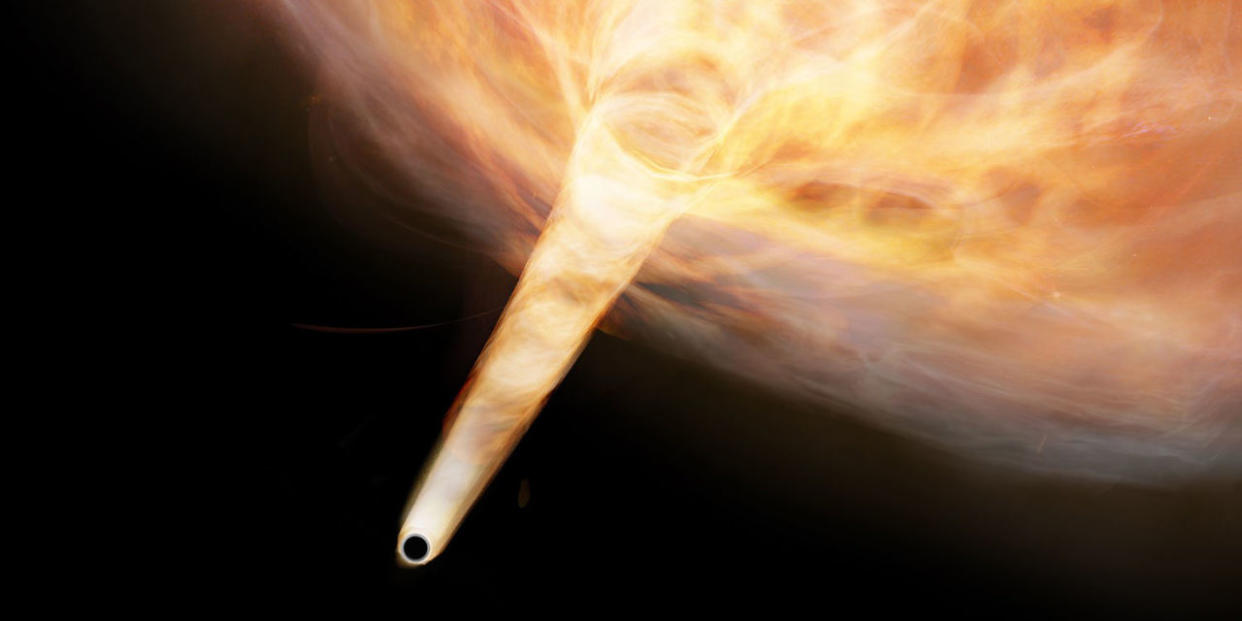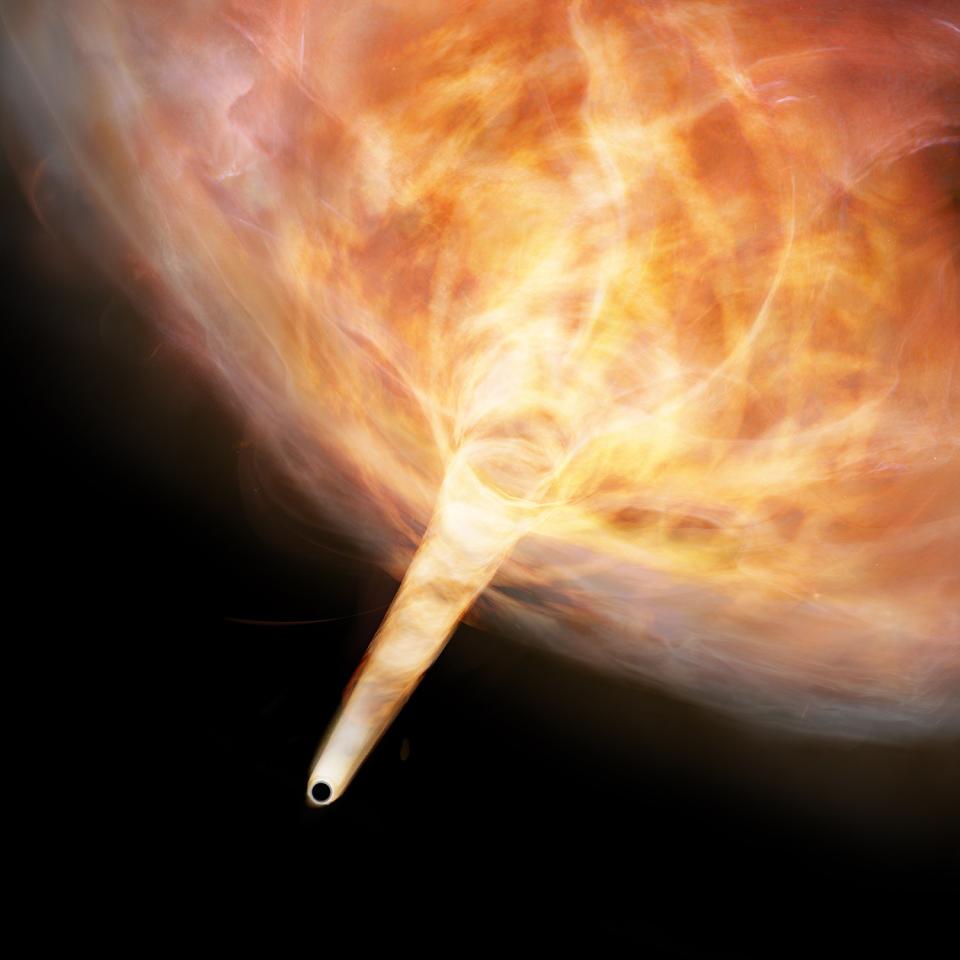Astronomers Discover Stray Black Holes Hiding in the Milky Way


We find most black holes by noticing what surrounds them. If a black hole is near a star, the black hole become visible thanks to the super-hot ring of gas that surrounds it as it pulls matter from the star to oblivion. But if a black hole is floating by itself in space, it's nearly impossible to locate. That goes part of the way towards explaining why hypothetical models predict there are between 100 million and 1 billion black holes in the Milky Way galaxy, but researchers have only located about 60.
Now, researches may have stumbled on a new method of identifying these "quiet" black holes. Masaya Yamada, a graduate student at Keio University, Japan, and Tomoharu Oka, a professor at Keio University, led a research team who used the ASTE Telescope in Chile and the 45-m Radio Telescope at Nobeyama Radio Observatory to study molecular clouds around W44, a supernova remnant about 10,000 light-years from Earth. In the course of their study, the researchers began to find some strange indicators at the edge of W44.
A molecular cloud, dubbed "Bullet," was moving at an enormously fast speed towards what appeared to be nothing. The cloud, about two light-years wide, was moving against the current of the Milky Way galaxy, at a speed of 120 kilometers a second, twice the speed of sound. "Most of the Bullet has an expanding motion with a speed of 50 km/s, but the tip of the Bullet has a speed of 120 km/s," Yamada said in a statement. "Its kinetic energy is a few tens of times larger than that injected by the W44 supernova. It seems impossible to generate such an energetic cloud under ordinary environments."
Two hypotheses for the Bullet's formation require a black hole to be present. The only thing we don't know is what size of black hole. The first is the "explosion model," in which the researchers write, the "expanding gas shell of the supernova remnant passes by a static black hole" and "the black hole pulls the gas very close to it, giving rise to an explosion, which accelerates the gas toward us after the gas shell has passed the black hole." In that scenario, the black hole would weigh about 3.5 solar masses. In the "irruption model," a high speed black hole would blow through the supernova remnant, dragging a trail of gas behind it. In this case, the black hole would be much bigger, around 36 solar masses. Right now, it's impossible to tell which of these scenarios is accurate.
In either case, this study proves that there are more ways to identify black holes than previously thought. "We found a new way of discovering stray black holes," Oka said. Hopefully their method will allow other scientists to take a crack at the millions and millions of other black holes that are waiting to be discovered.
Source: Nobeyama
You Might Also Like

